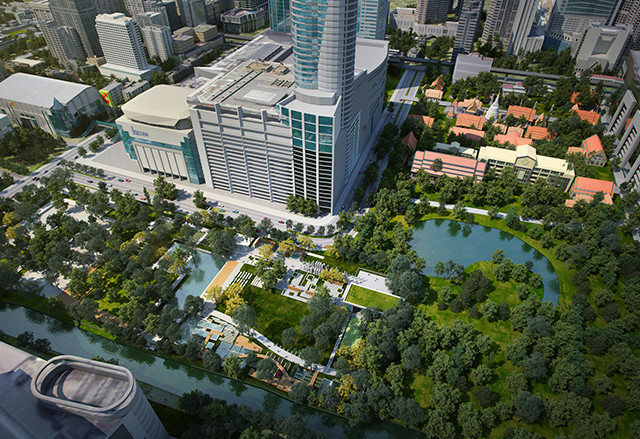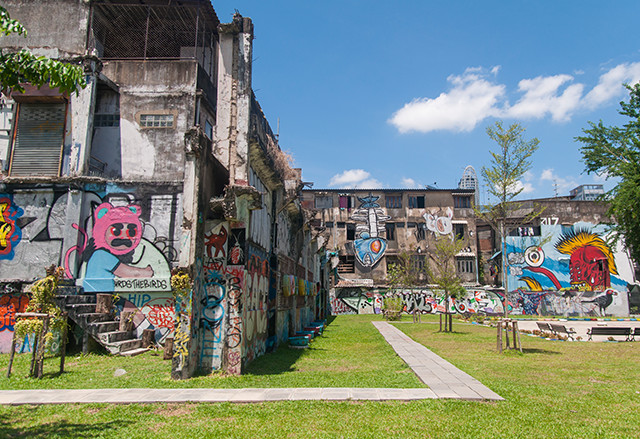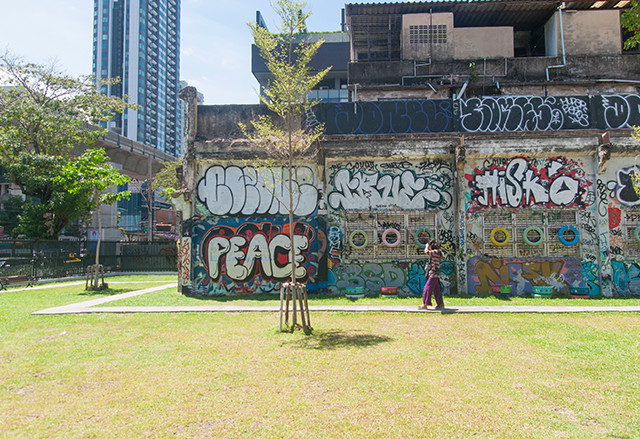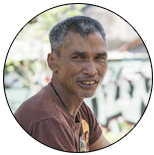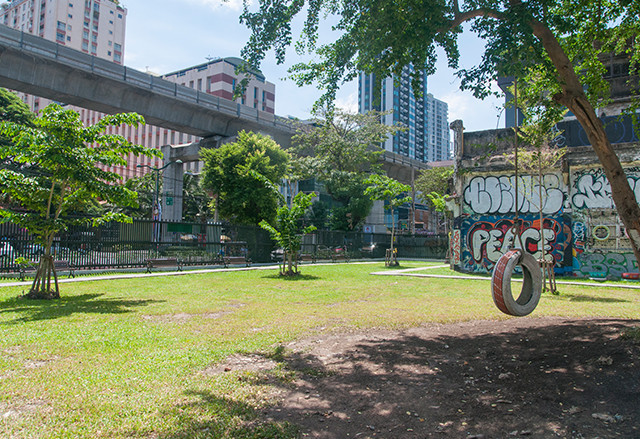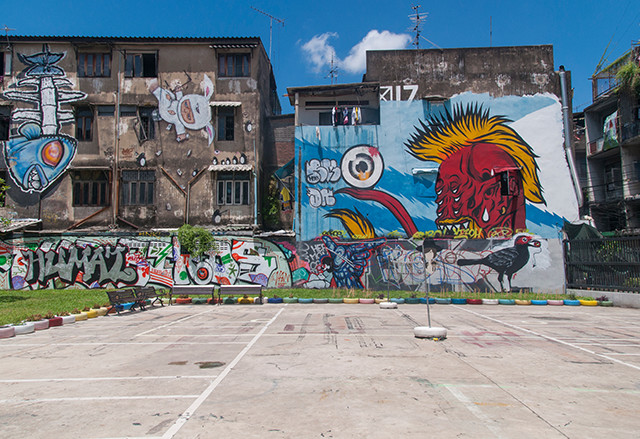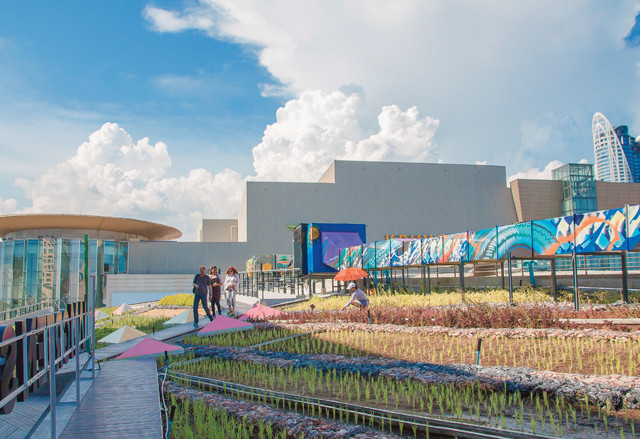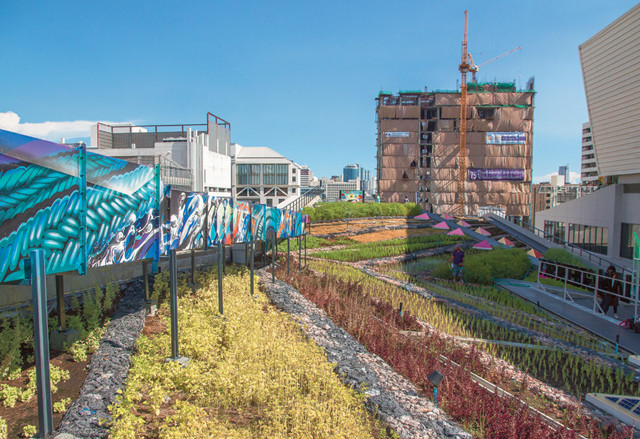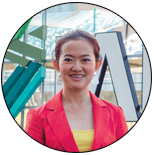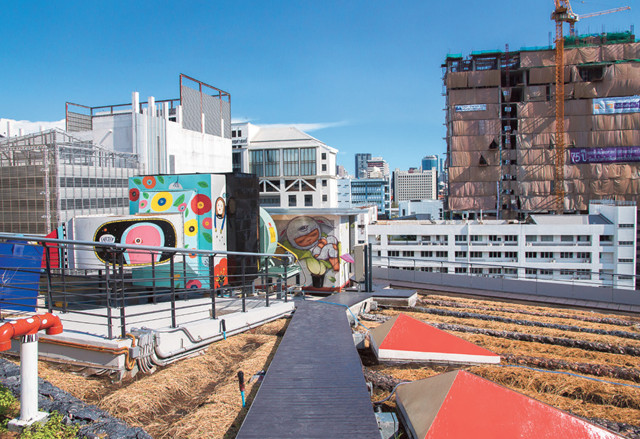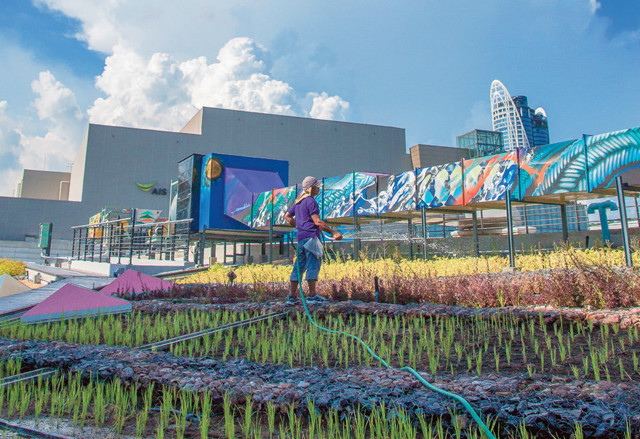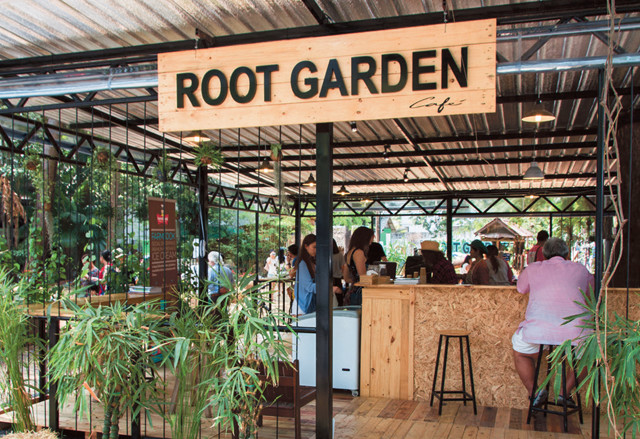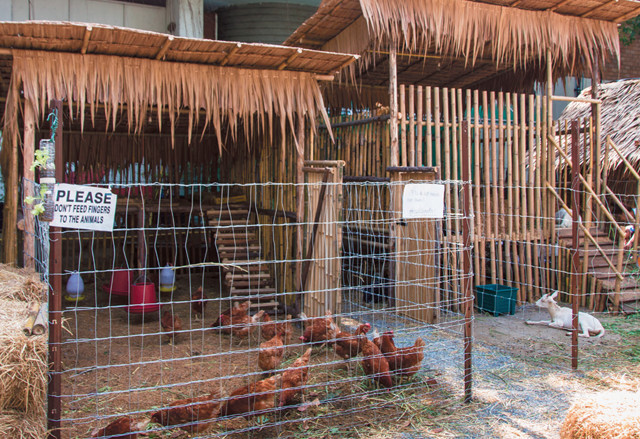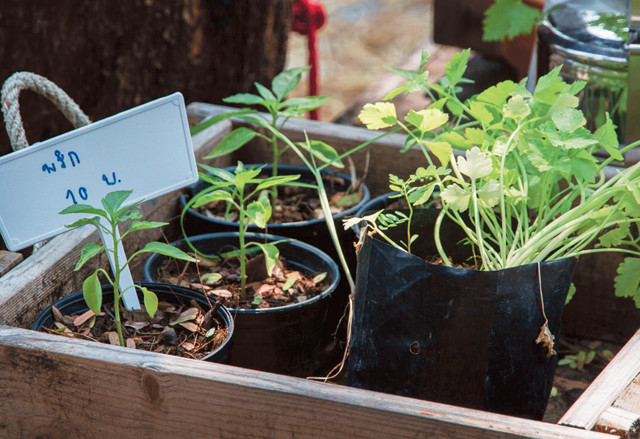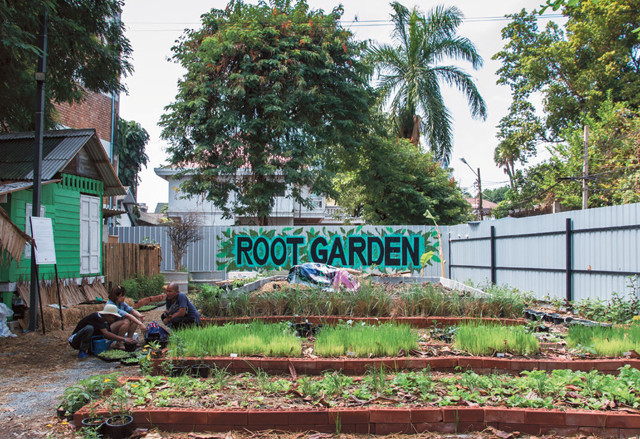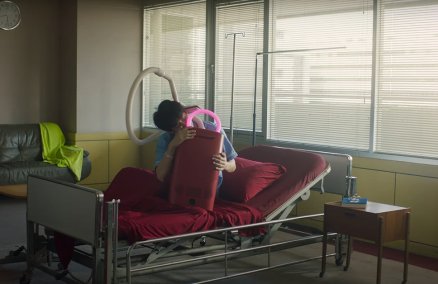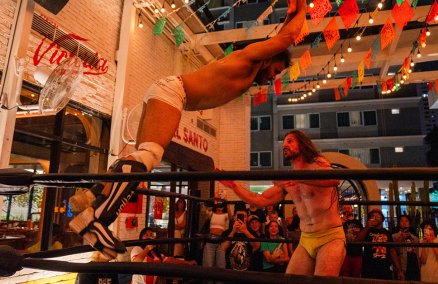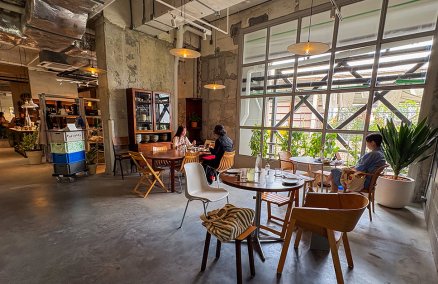PATHUMVANARAK PARK
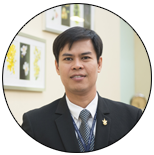
Thana Khachaphrai
Until recently, not much was known about the renderings of a rumoured new park next to CentralWorld that went viral in May. But the project, called Pathumvanarak Park and headed by the Crown Property Bureau (CPB), is actually very near completion. Here, we talk to Thana Khachaphrai, chief of the business projects division for the CPB, who confirms the land will open as a new public park this August.
How did this project get started?
Plans for a park on this land dedicated to the king have been around since 1995. Leading Thai architect Yodyiam Teptaranon has designed this park under the theme “Father’s Garden,” in accordance with the king’s work and teachings. Specific trees will be used to treat sewage, while the Season Changes garden will utilize seasonal plants to balance the quality of the water. The highlight will be a soil wall featuring soils in a range of colors taken from the hundreds of districts across the country that the king has visited.
How much of the park will be ready by August?
The opening will be separated into three phases. Seven rai of the first batch is finished, while another 12 rai is still under construction and will be ready to open this August. The second batch, which is currently being rented by CPAC Concrete, will start construction by the end of this year after they move out. The last batch, which is now a slum, is still in the process of compensation.
Does the CPB have plans for any more parks?
Not at the moment, as we’ve also just created Nakapirom Park near Wat Pho. But in the future we plan to develop land with tenants who fit with our motto of developing economy, society, environment and culture. We just leased 88 rai of land that used to be Suan Lum Night Bazaar to the Univenture Group, who will build a new complex that incorporates 30 percent green space.
Ratchadamri Rd., next to CentralWorld, BTS Siam
CHALERMLA PARK
Prasert Jewcharoen
The Bangkok Metropolitan Administration (BMA) has quietly revamped this abandoned space near BTS Ratchethewi belonging to the Expressway Authority of Thailand (EXAT) into Chalermla Park, a tiny green space that opened in Febuary this year. We spoke to Prasert Jewcharoen, 47, Ratchathewi district’s gardener, who’s worked in the area for more than 10 years.
What did you do with all the waste material that was in this area?
It took us nearly two months to get rid of all the old rubbish and concrete debris. We used six-wheeled trucks to carry it out every night.
How has feedback been since the park opened?
People mostly come to use the park in the mornings and evenings, jogging or having picnics. Small children run around.
Do you allow graffiti murals on the walls?
We have no problem with that graffiti. I actually kind of like it. It makes the park more colorful and cheerful. Graffiti artists can come to paint here freely. The only thing that I ask is that they don’t damage my grass! It’s hard to grow and maintain.
As a gardener, what do you want to say to Bangkokians?
Please don’t hurt trees—they’re your taxes. We try to take care of these trees as much as possible. We once had a case of a noodle stall pouring hot soup onto a tree’s root until it died. As soon as we planted a new tree, they started doing it again.
Phayathai Rd., next to Hua Chang Bridge. Open 5:30am-7pm. BTS Ratchathewi
SIAM GREEN SKY
Kotchakorn Voraakom
Siam Square One, the shopping mall situated on the 4,800 sq meters of land owned by Chulalongkorn University in the heart of Siam Square, has opened an urban green space on its rooftop. Run by Kotchakorn Voraakom, 35, a landscape designer and lecturer at Chulalongkorn’s Faculty of Architecture, Siam Green Sky aims to be an agricultural learning center that’s open to all members of the public to discover how to grow edible gardens.
How much green potential is there in Bangkok’s rooftops?
Many rooftops in Bangkok are wasted areas that just get used to store unwanted stuff. These rooftops have the potential to become green spaces, which in turn would help filter heat before it reaches the building. Reducing heat radiated by rooftops can abate the kind of severe tropical storms we’ve seen recently.
How can the public engage with your project?
We want to communicate to people that, even though we live in the city, agriculture is still important. It’s not a far-fetched idea to create urban green spaces for public educational purposes. We will provide free workshops and lectures on urban green space and agriculture, to be held by academics, as well as a farmers’ market every third Saturday of the month, offering free stalls to real farmers. Moreover, we will cooperate with the shops in Siam Square One and allow them to use our space to plant their own vegetables.
What should Bangkok’s property developers consider when building new projects?
Climate change is a global concern—and our city is screwed. New projects are all using an old-fashioned business model which only looks for temporary profits. Investing money in environmental-friendly infrastructure shouldn’t be considered squandering
money as it has the potential for long-term profit.
Siam Green Sky, 7F, Siam Square One, 991 Rama 1 Rd. Open Wed and Sat from 10am-6pm. BTS Siam. Reserve your tour at 099-001-8514
ROOT GARDEN
Founded by the not-for-profit organization Plick Feun Puen Din Thai (Land Reform in Thailand), this tiny garden near Pridi Banomyoug Institute on Soi Thonglor has a one-year contract in order to show how neglected land can be easily utilized by poor urban farmers. BK talked to Warut Boontarig, 25, the garden’s manager, who explained what he hopes to achieve in the project’s limited timeframe.
Root Garden has been operating for half a year now. How has the feedback been?
At first we targeted twenty-somethings. These people are my peers so I understand them well, and farming is like Siberia for my generation—we know nothing about it. But now we also have older visitors, mostly families taking their children to experience something they can’t see at home. It’s good that there’s a place for kids to spend time with nature.
How much is this land in the middle of Thonglor worth? And how can you justify not turning it into a commercial business?
The value of this 1,000-sq-meter area is approximately B250 million. But turning it into a commercial project is unfeasible as well as disrespectful to the former owner, whose grave is here. This garden is testimony that self-sufficiency is possible in any part of the city.
How are you measuring the success of this project?
We aim to emphasize the importance of barren wastelands, and show that they can be put to short-term use. It’s a shame to let land in the central business district go unused. Root Garden collects data from our visitors and follows up to see if they are inspired to create their own gardens at home. But there’s a lot we still have to achieve in the six months next.










